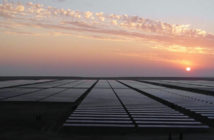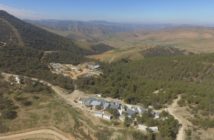This is the second in a three-part series. The first covered Tunisia, Egypt and Bahrain. The final post will cover the effect of these uprisings outside the Arab world.
 As it has with other countries in the Arab world, technology continues to play a role in communications between protesters in Morocco, Yemen and Syria, as well as between those protesters and the global public. It has also served as the fulcrum for the offending regimes’ attempts at hanging onto power: posting propaganda, misleading statements attributed to protestors, shutting off access to the Internet and more.I asked people I know in the countries of the Arab Spring to tell us how they think things currently stand and what role technology continues to play there. Today we take a look at Morocco, Yemen and Syria.
As it has with other countries in the Arab world, technology continues to play a role in communications between protesters in Morocco, Yemen and Syria, as well as between those protesters and the global public. It has also served as the fulcrum for the offending regimes’ attempts at hanging onto power: posting propaganda, misleading statements attributed to protestors, shutting off access to the Internet and more.I asked people I know in the countries of the Arab Spring to tell us how they think things currently stand and what role technology continues to play there. Today we take a look at Morocco, Yemen and Syria.
Morocco
 Lbadikho is a blogger and author at Talk Morocco and one of the co-founders of Mamfakinch. In a recent article on Talk Morocco, he “tried to evaluate the role of technology as a catalyst to the (protests).”
Lbadikho is a blogger and author at Talk Morocco and one of the co-founders of Mamfakinch. In a recent article on Talk Morocco, he “tried to evaluate the role of technology as a catalyst to the (protests).”
“In the eve of the protests, more precisely in February 19th, a large call for canceling the Feb20 protests was spread through official state television and some independent Radios. Many people started believing this fake canceling, as the state media used one ex figures of the Feb20 to give credit to this call.”Activists started to deny this state-organized rumor using social networks and blogs. At mamfakinch for example, this communiqué discredits the major Press Agency in Morocco with Snapshoots proving that the Agency is aiming by its rumors to spread information that would let people really think the protests are cancelled and not to take to the streets the day after.
“From this point of view, Feb20 was a good gauge for New Medias’ impact in Morocco : the Mamfakinch’s denial was read more than 15000 times [1] few hours after being posted, and similar denial were spread through social media, mainly facebook to let people know that there were no cancelling of the demonstrations as MSM claimed. On sunday, the number of participants was so important that orders were given to state televisions to cover the demonstrations.”
In other words, in Morocco, social media has proven a largely successful bullshit detector.
“I add to the articles,” Lbadikho told ReadWriteWeb, “the difference between Morocco and Tunisia is that in our case, the absence of Tunisian-like censorship made that we don’t have the same number of Internet-savvy activists. For example, you’ll not find a group like Takriz in Morocco, unfortunately.”
Yemen
 Walid Al-Saqaf is a Yemeni activist and media researcher based in Sweden. He is the editor of the news aggregation site Yemen Portal.
Walid Al-Saqaf is a Yemeni activist and media researcher based in Sweden. He is the editor of the news aggregation site Yemen Portal.
“Although there has been a rapid growth in the use of the Internet in recent years, excessive power outages, diesel shortage and price hikes have caused a decline in Internet access due to high costs of operating Internet cafes. Yemen is among the poorest countries in the world and most Internet users don’t own their own computers. Yet almost all Yemenis have mobile connectivity though the government limited Internet services and international calls for users of SabaFon, the GSM company mainly owned by Hameed Al-Ahmar, a leading opposition figure calling for the end of Saleh’s regime.”Yet when we consider the high percentage of illiteracy, lack of adequate infrastructure for telecommunication and electricity in vast areas of the country, we can say that Yemenis were able to overcome many obstacles and leverage technology in their favor. For example, there are dozens of Facebook groups supporting the revolution. Many are aggregated by my search engine Yemen Portal and are utilizing the global social network to propagate their messages and share videos of demonstrations, attacks, and other important and relevant events and activities.”
Unfortunately, I could not get an in-country source on Syria by the time of posting. I hope to feature an update on that country later.
Read the first post in this series, covering Tunisia, Egypt and Bahrain. The final post will cover the effect of these uprisings outside the Arab world.






